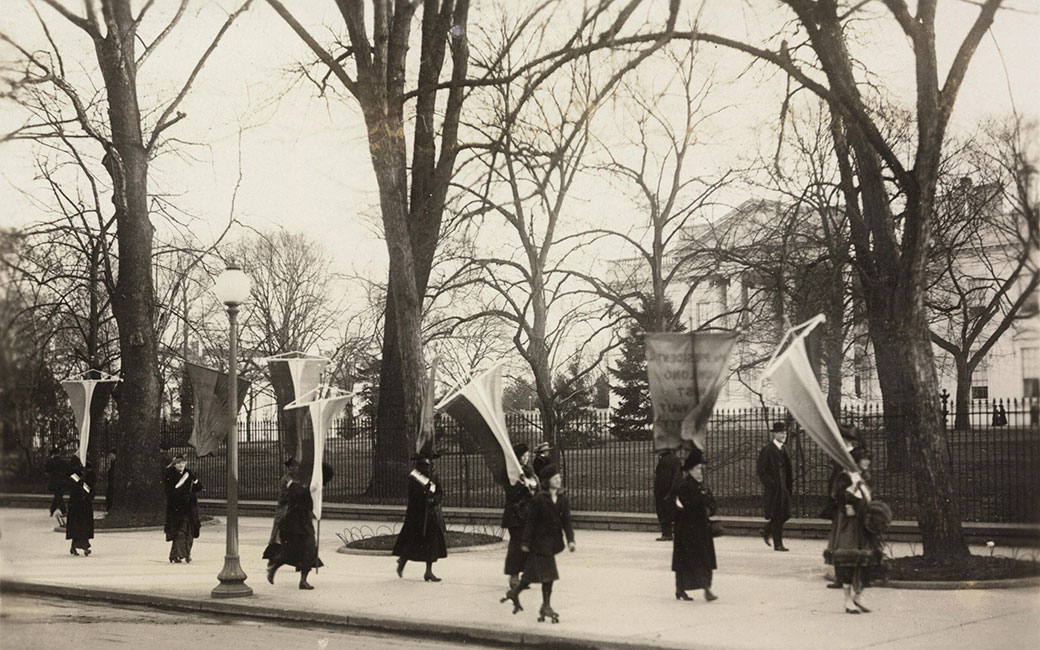TU partners with National Park Service to map the women’s suffrage movement
Highlighting key figures, networks in women’s suffrage, the comprehensive resource launches on movement’s 100th anniversary
By Rebecca Kirkman on August 7, 2020

A new tool from the National Park Service (NPS) that sheds light on the people and places at the heart of the U.S. suffrage movement will launch on Aug. 18—the 100th anniversary of the ratification of the 19th Amendment, which granted women the right to vote.
The Suffragist Stories Project, created by the NPS in collaboration with Towson University and its Center for GIS, will launch during a virtual event hosted by the Peale in Baltimore.
The NPS is among America’s most trusted resources for place-based education. The story of the struggle for women’s rights, including suffrage, is one that connects NPS sites across the nation. By linking data from archival correspondence collections with geolocators, the Suffragist Stories Project’s interactive storymap creates a visual representation of social networks, overlapping reform movements, people, places and the transfer of ideas throughout the country.
“Every park has a connection to women that can inspire current and future generations,” says Will Shafroth, president and CEO of the National Park Foundation, the official charity of the NPS. “The National Park Foundation and our donors, who played a key role in inspiring the launch of our Women in Parks initiative last year, are thrilled to make stories about women’s contributions to our country, past and present, accessible to all people through parks and online.”
Researchers, including TU undergraduate students, combed through letters and documents to network relationships between well-known suffragists like Susan B. Anthony and Elizabeth Cady Stanton and regional or local participants or allies. They also tied the figures to historic sites and homes, often part of the national park system.
NPS said in a statement:
“Towson University has demonstrated its excellence as an NPS partner on several ethnographic and geographic studies that include social networking. Their social science and GIS teams have worked diligently to field and apply data from community-sourced primary material and some of the most important historical document repositories. They continue their work here, with the Suffragist Stories Project, folding in national level NPS and partner resources to reconstruct the suffragist network.”
Connecting more than 900 individuals and 200 historic sites, the women’s suffrage storymap is easily accessible and one of the most comprehensive archival GIS sites dedicated to this movement in U.S. history.
“These students were able to work alongside experts in the field, demonstrating the power of collaboration and the ability of the National Park Service to develop the next generation of citizen historians in the United States,” says Matthew Durington, professor of anthropology and director of community engagement and partnerships in the Division of Strategic Partnerships & Applied Research.
Attend the Launch
Join Towson University and the National Park Service for the live launch of the Suffragist Storymap. The virtual event will include opening remarks, a guide to using the resource, and a panel discussion.
Suffragist Storymap Launch
August 18, 11 a.m.–12 p.m.
The Peale, RSVP here
Additional collaborators on the project include The Schlesinger Library at Harvard University, the Environmental Systems Research Institute and Tom Dublin, director of The Online Biographical Dictionary of the Woman Suffrage Movement.
The publicly accessible GIS storymap will be a tool for students and teachers from K–12 and higher education environments, historical archivists and anyone interested in the history of women’s suffrage in the United States.
“The importance of the 19th Amendment has never been clearer, and equitable access to voting, education and social mobility are at the core of TU’s mission and values,” says TU President Kim Schatzel. “We look forward to seeing the positive impact the suffrage storymap will bring to the community.”
The storymap project is the latest in a longstanding partnership between TU and the NPS.
Anthropology professors Samuel Collins and Durington, who led TU’s involvement in the women’s suffrage storymap, collaborated with Kate Wilkinson in women’s studies and Paporn Thebpanya in geography on the project.
Previously, Collins and Durington worked with students on a collaborative, curriculum-based study of the NPS’ Potomac Heritage Trail for the park service’s 100th anniversary in 2016. They have also worked with the First State Historical National Park in Delaware and locally with Cheryl LaRoche at the Hampton National Historic Site.
The partnership is one of more than 400 active engagements within the university’s BTU presidential priority, where faculty, students and staff partner with organizations in greater Baltimore, in Maryland and beyond to create positive impacts.
This story is one of several related to President Kim Schatzel’s priorities for Towson University: BTU-Partnerships at Work for Greater Baltimore.